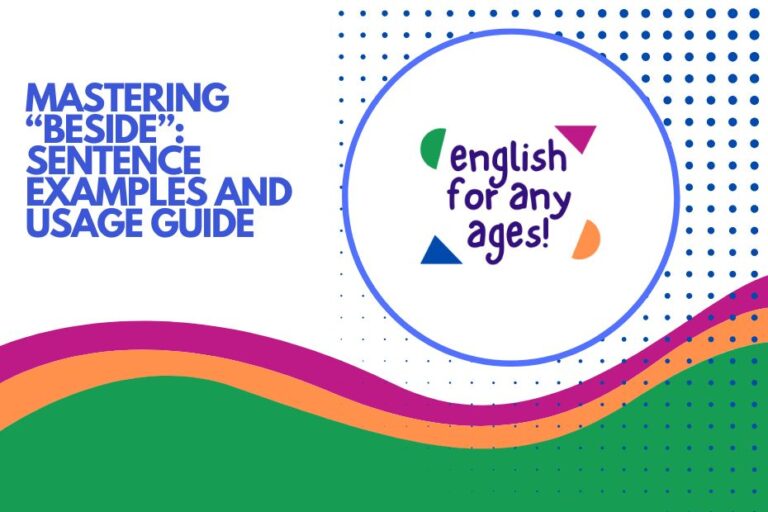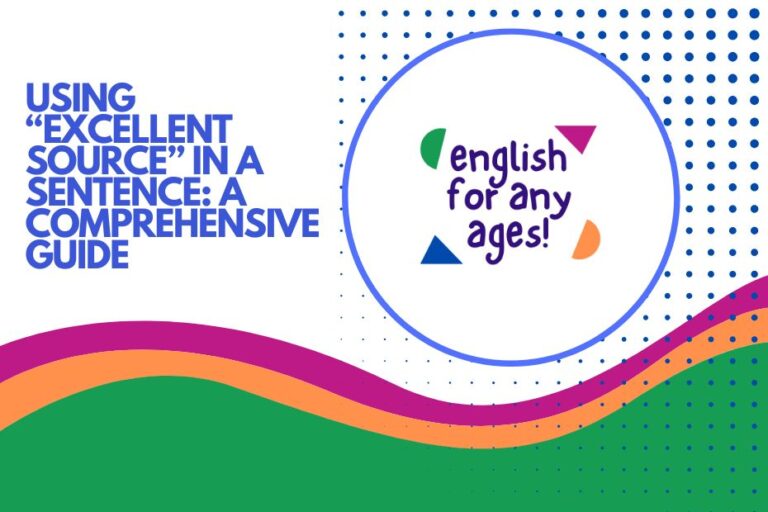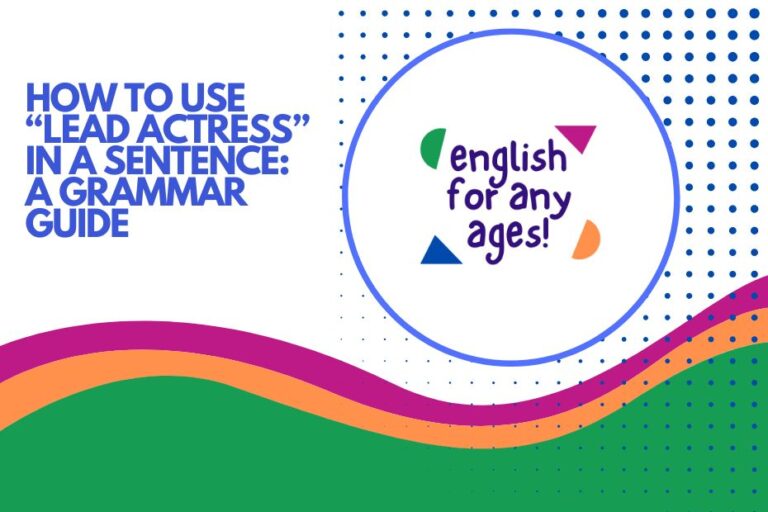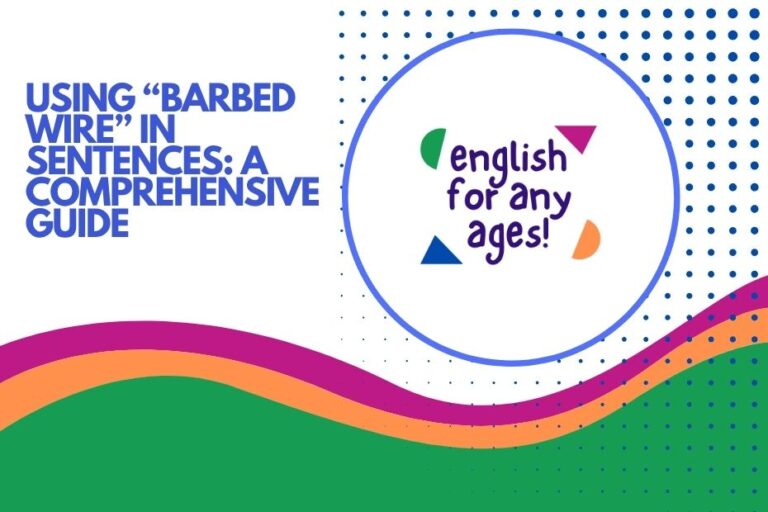How to Use “Slender” in a Sentence: A Comprehensive Guide
Understanding how to use the word “slender” effectively can significantly enhance your descriptive writing and speaking skills. “Slender” is an adjective that describes something or someone attractively thin or gracefully slim.
This article provides a comprehensive guide to using “slender” correctly, covering its definition, structural usage, various contexts, common mistakes, and practical exercises. Whether you’re an English language learner or a native speaker looking to refine your vocabulary, this guide will equip you with the knowledge and confidence to use “slender” accurately and appropriately.
This guide is designed for ESL students, writers, and anyone looking to improve their command of the English language. By exploring numerous examples and practical exercises, you’ll gain a solid understanding of how to incorporate “slender” into your everyday communication, enhancing your descriptive abilities and overall fluency.
Table of Contents
- Definition of “Slender”
- Structural Breakdown
- Synonyms and Related Words
- Examples of “Slender” in Sentences
- Usage Rules
- Common Mistakes
- Practice Exercises
- Advanced Topics
- FAQ
- Conclusion
Definition of “Slender”
The word “slender” is an adjective primarily used to describe something or someone that is gracefully thin or delicately slim. It often carries a connotation of elegance and attractiveness, suggesting a refined slenderness rather than a gaunt or unhealthy thinness. “Slender” can be applied to people, objects, and even abstract concepts to convey a sense of delicacy, grace, and elegance. Understanding the nuances of “slender” helps in using it effectively in various contexts.
Classification: Adjective
Function: Descriptive; modifies nouns to indicate a thin or slim appearance.
Contexts: Commonly used in descriptions of physical appearance, architecture, design, and metaphorical contexts where a sense of delicacy or elegance is desired.
Structural Breakdown
The structural use of “slender” is relatively straightforward. As an adjective, it typically precedes the noun it modifies.
Its placement within a sentence follows standard adjective-noun order in English grammar. “Slender” can also be used predicatively, following a linking verb such as “is,” “are,” “was,” or “were.” Understanding these structural patterns helps ensure correct usage in various sentence constructions.
- Attributive Use: “Slender” directly precedes the noun it modifies. For example: “She has a slender figure.”
- Predicative Use: “Slender” follows a linking verb. For example: “Her figure is slender.”
- Comparative and Superlative Forms: While less common, “slender” can take comparative (“slenderer” or “more slender”) and superlative (“slenderest” or “most slender”) forms, though using “more/most slender” is often preferred for elegance.
The correct structural placement of “slender” ensures that the sentence is grammatically sound and conveys the intended meaning clearly. Whether used attributively or predicatively, the adjective enhances the descriptive quality of the sentence.
Synonyms and Related Words
Expanding your vocabulary with synonyms and related words for “slender” can help you express similar ideas with greater variety and precision. Understanding these alternatives allows you to choose the most appropriate word for the specific context.
- Slim: Similar to “slender,” but often implies a more general thinness.
- Thin: A basic term for lacking thickness, but without the elegance of “slender.”
- Lean: Suggests a healthy, athletic thinness.
- Svelte: Implies a graceful and slender figure, often used in fashion contexts.
- Lithe: Describes someone slender and flexible, often used for dancers or athletes.
- Graceful: Emphasizes the elegance and poise associated with slenderness.
- Delicate: Highlights the fine and fragile nature of something slender.
Using synonyms can add subtlety and depth to your descriptions. For instance, describing a dancer as “lithe” provides a more specific image than simply saying “thin.”
Examples of “Slender” in Sentences
To fully grasp the usage of “slender,” it’s essential to examine numerous examples in different contexts. The following sections provide examples categorized by what is being described: people, objects, and abstract concepts.
Describing People
When describing people, “slender” often refers to a figure that is attractively thin and well-proportioned. It implies a positive attribute, suggesting grace and elegance rather than unhealthy thinness.
The following table provides examples of using “slender” to describe individuals.
The table below showcases how “slender” can be used to describe various aspects of a person’s appearance, highlighting its positive and elegant connotation.
| Sentence | Context |
|---|---|
| She has a slender figure that turns heads wherever she goes. | General description of attractiveness. |
| The model’s slender waist was accentuated by the designer dress. | Fashion and appearance. |
| He admired her slender hands as she played the piano. | Focus on a specific body part. |
| The ballerina’s slender frame allowed her to move with incredible grace. | Describing a dancer’s physique. |
| Despite her age, she maintained a slender silhouette. | Longevity and health. |
| The queen was known for her slender neck and elegant posture. | Historical or regal description. |
| Her slender ankles made her appear taller. | Perception of height and appearance. |
| He found her slender build to be incredibly attractive. | Personal preference. |
| The athlete maintained a slender physique through rigorous training. | Fitness and dedication. |
| She wore a dress that highlighted her slender form. | Fashion and style. |
| The portrait showed her with a slender face and delicate features. | Artistic representation. |
| Her slender fingers danced across the keyboard. | Describing dexterity and elegance. |
| The designer aimed to create clothes that would flatter a slender body type. | Fashion design. |
| She was admired for her slender legs and toned muscles. | Physical fitness and appearance. |
| He noticed her slender wrists adorned with a delicate bracelet. | Attention to detail. |
| The actress was praised for her slender figure and radiant smile. | Public image and beauty. |
| She attributed her slender waist to a healthy diet and regular exercise. | Lifestyle and health. |
| The princess was described as having a slender build and graceful movements. | Royal description. |
| He was captivated by her slender arms and gentle touch. | Personal connection. |
| She maintained a slender physique through yoga and meditation. | Holistic wellness. |
| The model’s slender silhouette was perfect for the high-fashion runway. | High fashion context. |
| Her slender form moved effortlessly across the stage. | Performance art context. |
| The photograph captured her slender figure in a timeless pose. | Photographic context. |
| She had a naturally slender frame that required little effort to maintain. | Natural attributes. |
| The dancer’s slender legs were strong and agile. | Physical strength and agility. |
| Her slender wrists were adorned with intricate tattoos. | Personal style and expression. |
| She was known for her slender figure and impeccable style. | Overall impression. |
Describing Objects
“Slender” can also be used to describe objects, particularly those that are tall and thin or delicately shaped. This usage often conveys a sense of elegance or sophistication in design.
The following table provides examples of using “slender” to describe various objects.
The table below illustrates the versatility of “slender” in describing objects, highlighting its association with elegance and refined design.
| Sentence | Context |
|---|---|
| The slender vase held a single, perfect rose. | Home decor and elegance. |
| The slender tower pierced the sky, a symbol of the city’s ambition. | Architecture and landmarks. |
| He wrote with a slender pen, its ink flowing smoothly across the page. | Writing instruments and craftsmanship. |
| The slender candles cast a warm, inviting glow. | Ambiance and atmosphere. |
| The slender bridge spanned the river, connecting the two sides of the town. | Infrastructure and engineering. |
| She wore a slender necklace, its delicate chain barely visible. | Jewelry and fashion. |
| The slender stems of the flowers swayed gently in the breeze. | Nature and botany. |
| They sat at a slender table, enjoying their morning coffee. | Furniture and lifestyle. |
| The slender flute produced a clear, melodious sound. | Musical instruments and performance. |
| The slender spire of the church dominated the skyline. | Religious architecture. |
| He admired the slender lines of the sports car. | Automotive design. |
| The slender branches of the willow tree drooped gracefully. | Landscape and nature. |
| The slender antenna on the roof picked up radio signals from far away. | Technology and communication. |
| She carefully arranged the slender stalks of asparagus on the plate. | Culinary arts and presentation. |
| The slender frame of the bicycle made it easy to maneuver. | Sports and recreation. |
| The slender pages of the antique book were yellowed with age. | Literature and history. |
| The slender needle of the compass pointed north. | Navigation and science. |
| The slender blade of the sword was razor-sharp. | Weaponry and history. |
| The slender glass held a sparkling cocktail. | Barware and mixology. |
| The slender legs of the antique chair were intricately carved. | Furniture design and craftsmanship. |
| The slender design of the smartphone made it easy to hold. | Modern technology. |
| The slender arch of the eyebrow gave her face character. | Facial features and expression. |
| The slender silhouette of the lamp added a modern touch to the room. | Interior design and lighting. |
| The slender trunk of the young tree swayed in the wind. | Arboreal characteristics. |
| The slender filament of the light bulb glowed brightly. | Electrical components and function. |
| He used a slender brush to paint the delicate details. | Artistic tools and techniques. |
| The slender frame of the eyeglasses suited her face perfectly. | Eye wear and fashion. |
Describing Abstract Concepts
While less common, “slender” can also be used metaphorically to describe abstract concepts, conveying a sense of fragility, tenuousness, or slightness. This usage often adds a subtle layer of meaning to the description.
The following table provides examples of using “slender” to describe abstract concepts.
The table below demonstrates the creative and nuanced application of “slender” in describing abstract concepts, adding depth and subtlety to the expression.
| Sentence | Context |
|---|---|
| The company’s profits were based on a slender margin. | Financial stability and risk. |
| The evidence was slender, making it difficult to prove the case. | Legal proceedings and proof. |
| His chances of winning the lottery were slender. | Probability and luck. |
| The thread of hope was slender, but it kept them going. | Emotional resilience and perseverance. |
| The connection between the two events was slender, requiring further investigation. | Investigation and analysis. |
| The agreement rested on a slender foundation of trust. | Relationships and business deals. |
| The possibility of success was slender, but they were determined to try. | Determination and ambition. |
| The difference between success and failure was slender. | Outcomes and consequences. |
| The consensus among the experts was based on a slender amount of data. | Expert opinions and research. |
| Their lead in the polls was slender, indicating a close race. | Political campaigns and elections. |
| The justification for the decision was slender, raising concerns among the staff. | Decision-making and transparency. |
| The margin for error was slender, requiring precision and accuracy. | Precision and accuracy. |
| The rationale behind the policy was slender and unconvincing. | Policy critique and evaluation. |
| The basis for their argument was slender, making it easy to refute. | Argumentation and debate. |
| The evidence supporting the claim was slender and circumstantial. | Evidence analysis and validation. |
| The chance of rain was slender, but it was still advisable to bring an umbrella. | Weather forecasts and preparation. |
| The opportunity for advancement was slender, leading to high turnover. | Career prospects and job satisfaction. |
| The support for the project was slender, threatening its viability. | Project management and funding. |
| The hope for a peaceful resolution was slender, but diplomats continued to negotiate. | Diplomacy and conflict resolution. |
| The understanding between them was based on a slender thread of shared experience. | Interpersonal relationships and connections. |
| The connection to the past was slender after so many years. | Historical context. |
| The possibility of a full recovery seemed slender, but not impossible. | Medical prognosis. |
| The evidence presented was too slender to convict the suspect. | Legal evidence. |
| The foundation of their plan was slender, making it vulnerable. | Strategic planning. |
Usage Rules
Using “slender” correctly involves understanding certain grammatical rules and stylistic considerations. While the word is relatively straightforward, paying attention to these rules ensures accurate and effective usage.
- Placement: As an adjective, “slender” typically precedes the noun it modifies (attributive use) or follows a linking verb (predicative use).
- Connotation: “Slender” usually carries a positive connotation, implying grace and elegance. Avoid using it in contexts where a negative connotation of thinness is intended (e.g., unhealthy or emaciated).
- Comparatives and Superlatives: While “slenderer” and “slenderest” are acceptable, “more slender” and “most slender” are often preferred for a more formal and elegant tone.
- Contextual Appropriateness: Choose “slender” when you want to convey a sense of refined thinness. If you simply mean “thin,” other words like “slim” or “lean” might be more appropriate.
Adhering to these usage rules will help you employ “slender” effectively and appropriately in your writing and speech. Understanding the connotations and structural placements is crucial for clear communication.
Common Mistakes
Even experienced English speakers can make mistakes when using “slender.” Being aware of these common errors can help you avoid them and improve your accuracy.
| Incorrect | Correct | Explanation |
|---|---|---|
| She is very slenderly. | She is very slender. | “Slenderly” is an adverb, but “slender” is needed as an adjective after the linking verb “is.” |
| He has a thin and slender body. | He has a slender body. | “Thin” and “slender” are redundant in this context. “Slender” already implies thinness with elegance. |
| The house was slender. | The tower was slender. | “Slender” is typically used for objects that are tall and thin. “House” is not usually described as “slender.” |
| She is slender from hunger. | She is thin from hunger. | “Slender” has a positive connotation. Use “thin” when describing unhealthy thinness. |
| More slenderest. | Most slender. | Do not combine “more/most” with “-er/-est” suffixes. |
Avoiding these common mistakes will enhance the clarity and accuracy of your language, ensuring that you use “slender” correctly and effectively.
Practice Exercises
To reinforce your understanding of “slender,” complete the following exercises. These exercises are designed to test your knowledge and improve your ability to use “slender” correctly in various contexts.
Exercise 1: Fill in the Blanks
Fill in the blanks with the correct form of “slender” or a suitable synonym.
| Question | Answer |
|---|---|
| The ballerina had a ______ figure. | slender |
| The vase was ______, holding a single flower. | slender |
| His chances of success were ______. | slender |
| She wore a ______ necklace. | slender |
| The tower was ______ and elegant. | slender |
| The model had a ______ waist. | slender |
| The tree had ______ branches. | slender |
| She had a ______ build, perfect for running. | lean |
| The evidence was ______, making the case weak. | slender |
| He admired her ______ fingers. | slender |
Exercise 2: Sentence Construction
Construct sentences using “slender” to describe the following:
| Prompt | Example Answer |
|---|---|
| A woman’s figure | She has a slender figure that is admired by many. |
| A pen | He wrote with a slender pen, its ink flowing smoothly. |
| A hope | The slender hope kept them going through the difficult times. |
| A tree | The slender tree swayed gently in the breeze. |
| A bridge | The slender bridge spanned the river, connecting the two cities. |
| A musical instrument | The slender flute produced a beautiful melody. |
| A candle | The slender candle cast a soft glow in the room. |
| A chance | There was a slender chance that they would win. |
| A pathway | The slender pathway wound through the garden. |
| A spire | The slender spire of the cathedral reached towards the sky. |
Exercise 3: Error Correction
Identify and correct the errors in the following sentences:
| Incorrect Sentence | Correct Sentence |
|---|---|
| She is slenderly. | She is slender. |
| He has a thin slender body. | He has a slender body. |
| The building was slender. | The tower was slender. |
| She is slender because she doesn’t eat. | She is thin because she doesn’t eat. |
| More slenderest design. | Most slender design. |
| A slender of hope. | A slender thread of hope. |
| Slenderly built. | Slightly built. |
| The slenderly woman. | The slender woman. |
| He is more slender than her. | He is more slender than she is. |
| She is slender from sickness. | She is thin from sickness. |
Advanced Topics
For advanced learners, exploring the nuances and subtleties of “slender” can further enhance their understanding and usage. This includes examining its historical context, literary applications, and idiomatic expressions.
- Historical Context: Investigate how the perception and use of “slender” have evolved over time, particularly in relation to societal ideals of beauty.
- Literary Applications: Analyze how authors use “slender” to create vivid imagery and convey deeper meanings in their works.
- Idiomatic Expressions: Explore any idiomatic expressions that incorporate “slender,” understanding their specific meanings and usages.
- Cross-Cultural Comparisons: Compare how different cultures perceive and describe slenderness, noting any variations in connotation and usage.
By delving into these advanced topics, learners can develop a more sophisticated understanding of “slender” and its role in the English language, enhancing their ability to communicate effectively and creatively.
FAQ
Here are some frequently asked questions about using “slender” in a sentence:
- Is “slender” always a positive term?
Yes, “slender” generally carries a positive connotation, implying grace, elegance, and attractiveness. It is usually used to describe something or someone that is pleasingly thin.
- Can “slender” be used to describe anything?
While primarily used for people and objects, “slender” can also be used metaphorically for abstract concepts to convey a sense of slightness, fragility, or tenuousness.
- What is the difference between “slender” and “thin”?
“Thin” is a more general term for lacking thickness. “Slender” implies a more refined and attractive thinness, often associated with elegance and grace.
- Is it correct to say “slenderer” or “slenderest”?
Yes, “slenderer” and “slenderest” are grammatically correct, but “more slender” and “most slender” are often preferred for a more formal and elegant tone.
- Can “slender” be used to describe a building?
Yes, but typically only for tall, thin structures like towers or spires. It wouldn’t be appropriate for a wide or squat building.
- What are some synonyms for “slender”?
Synonyms for “slender” include slim, lean, svelte, lithe, graceful, and delicate.
- How do I avoid misusing “slender”?
Pay attention to the context and ensure that you are conveying a sense of refined thinness. Avoid using “slender” when describing unhealthy or emaciated conditions.
- Is “slenderly” a word?
Yes, “slenderly” is an adverb, but it’s not commonly used. It means “in a slender manner.” It’s more common to use “slender” as an adjective.
Conclusion
Mastering the use of “slender” can significantly enhance your descriptive vocabulary and improve the elegance of your writing and speech. By understanding its definition, structural usage, contextual applications, and common mistakes, you can confidently incorporate “slender” into your communication.
Remember that “slender” typically carries a positive connotation, implying grace and refined thinness, and is versatile enough to describe people, objects, and even abstract concepts.
Continue practicing with the exercises provided and exploring the advanced topics to deepen your understanding. With consistent effort, you’ll be able to use “slender” accurately and effectively, adding a touch of sophistication to your language skills.
Embrace the nuances of the English language, and continue to refine your vocabulary to express yourself with clarity and elegance.






